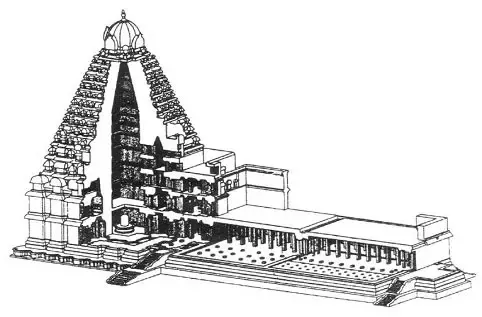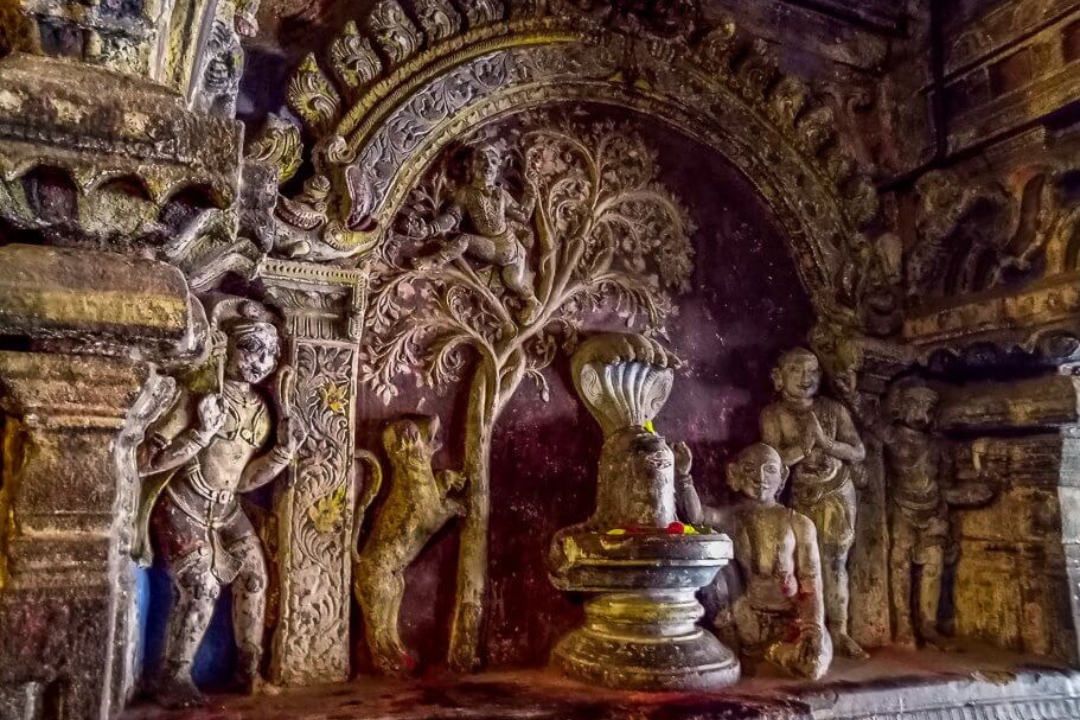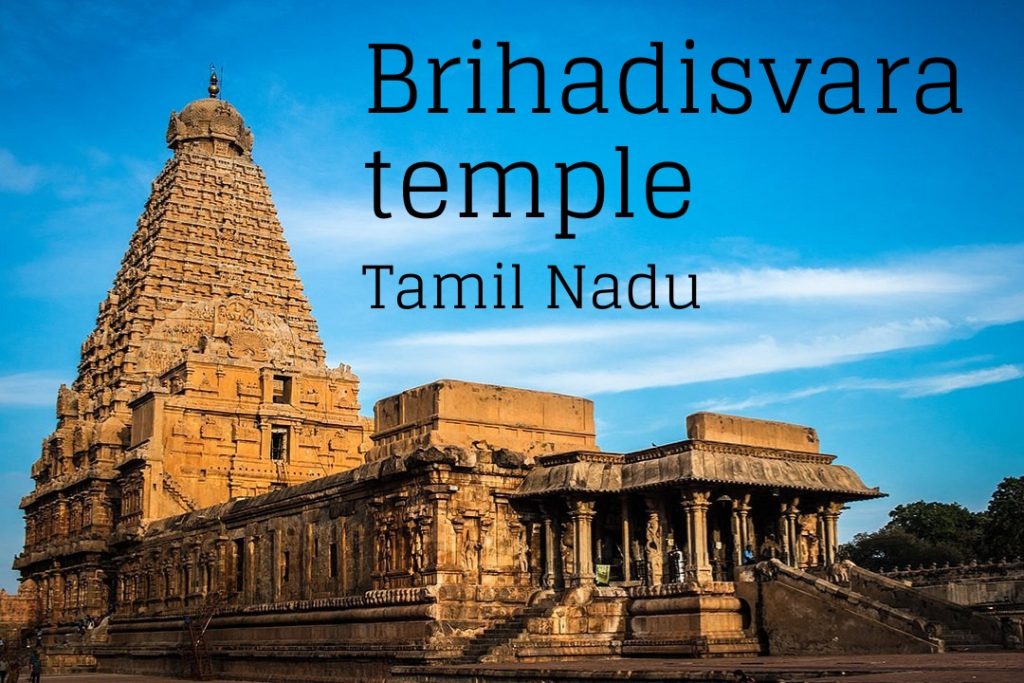Temples
Brihadeeshwara Temple of Thanjavur
Are you an avid traveler who is fascinated by the mysteries of ancient land?
Are you a theist looking to uncover the mystery of spirituality?
Are you looking to escape into realms of surreal architecture?
Or do you merely want to visit a temple with incredible positive vibrations?
We think we have one of the perfect places for you.
Just hop into your favorite mode of transport and land in the Thanjavur district of Tamilnadu, India. Located on the banks of the river Kaveri, the city standing amidst the lush greenery was the capital of the Chola emperors for a very long time.
The district is home to one of the most exquisite ancient architectural marvels – the Brihadisvara temple. Oldest among the group of Chola temples, the archaeologists estimate the temple is at least ten centuries old. The name Brihadeshwar is derived from the Sanskrit word Brihat and Ishwar, which translates to – a colossal supreme being, with reference to Lord Shiva.
Brihadeshwara temple beautifully illustrates the technological advancements achieved during the Chola period. Built according to the Chola architecture, the temple is home to one of the largest Shiva lingams in India. The temple mirrors the power held by Raja Raja Chola I, an ardent devotee of Lord Shiva, who is credited with the construction of this magnificent temple.
The ancient Shaivite shrine has a cultural UNESCO World Heritage Site tag, which signifies that this architectural marvel has immense value to humanity.
Read on to discover why UNESCO considers this exemplary architecture filled with immense knowledge, wisdom, spirituality, and divinity a heritage site.
Brihadisvara temple – From the Historical Pages
Standing in front of the magnificent architecture, one cannot stop but wonder why and how this temple was built. A glance into its past will give us valuable insights surrounding the efforts and the sheer brilliance that went into constructing this Periya Kovil.
Since time immemorial, the temples have been the storehouse of wisdom, culture, and architecture, and a window into the life of the people who lived in the past. The Rajarajeshwara temple or the Bhadeshwara temple is no exception.
Emperor Raja Raja Cholan was inspired to build such a monumental temple for lord Rudra after seeing the Pallava Raja Simha temples in Kanchipuram. To make his mark in the pages of history and see his inspirations come to life, the foundation stones for this huge Brihadeshvara temple were laid in 1002 CE. What followed during the next few years was the creation of a miracle. Epigraphical evidence shows that it took just eight years to complete this temple work in 1010 CE.
Commemorating his work, Raja Raja Chola 1 named the temple Rajarajeshwaram and the Lingam as Peruvudaiyar.
The Mesmerizing Architecture of Brihadisvara Temple

The Brihadisvara temple at Thanjavur was the first of its kind. The pearless architecture that stands amidst great walls has inscriptions telling the tales of Thanjavur City and how it witnessed the rise and fall of great empires.
The first architectural detail of the temple is that only granite and bricks went into building this incredible temple. The new architectural style introduced by the Cholas is based heavily on symmetrical and axial geometry. A Nandi shrine, two extensive worship rooms, antechambers, the vimana, and the sole entrance to the temple precincts, the gopuram, lie on the east-west axis.
A colossal Lingam carved from a single granite stone lies in the sanctum sanctuary. The supreme deity is covered by a vimana that is 216 ft high. The surprising fact about this vimana is that it is bonded with no binding materials like mortar. The most astonishing fact is that the topmost stone of the Vimana gopuram weighs about 80 tons, making it an engineering marvel.
The temple premises have a wide prakara and a large reservoir. A huge Nandi that measures 16 ft long and 13 ft high, again carved out of a single stone, lies at the entrance. There are eight such Nandi statues surrounding the prakara. The cloisters have wall paintings dating back centuries, which are nothing short of a visual treat.
Though we might never know the exact reason why the temples were built, we can only speculate and form theories based on the evidence. But no matter what, we cannot rule out that the Brihadesvara temple is a testimony to the brilliant minds of people during the Chola era who excelled in creating intricate architecture, painting, bronze casting, and sculpture.
The architectural styles of the temples that followed the rule of the Chola dynasty changed drastically, making these structures a unique representation of orthodox South Indian temple architecture.
Mysteries Surrounding the Brihadisvara Temple

As we said in the introduction, the Brihadeesvara temple of Thanjavur has many mysteries surrounding it.
- One of the most mysterious things is the technology used to place the capstone weighing 80 tonnes on top of the 216 ft vimana gopuram. Imagining the efforts and the technology used in the absence of modern construction materials is definitely baffling.
- The vimana, which is built entirely of granite, is said to be a depiction of Mahameru. It is hollow inside and is built using interlocking granite slabs. The hollow form reverberates the mantra Om throughout the structure, enhancing the positive energy of the temple.
- The Thanjavur temple has a series of intricate underground passages built to enable easy and safe passage for the kings and important people without being noticed by the enemies. What’s more interesting is these passages have ample air and water supply.
- A whopping 130,000 tons of granite stone went into building this mammoth structure. These granite stones find their origin at least 50 miles from the temple making transportation a feat in itself. Adding to the fact is the efforts and technology used to carve out the most intricate details in one of the hardest rocks on earth.
- The everlasting beauty of the Thanjavur paintings on the prakara is yet another mystery. The artworks have not lost their color even after ten centuries, which tells us a lot about the wealth of knowledge our ancestors had in preserving artifacts for future generations.
- The only temple in the world that does not cast a shadow on the earth during noon is the Brihadeesvara temple. One theory says this because of the magnanimous basement that absorbs the shadow, and the other points out that the flora that flourishes in the temple absorbs the shadow of this mammoth structure. All we know is that there is no conclusive evidence backing these theories.
- The temple has depictions of natya shastra, the first of its kind, where 81 of 108 karanas are carved into the temple walls.
Another marvel of the Chola dynasty is the Brihadesvara temple at Gangaikonda Cholapuram, built by Rajendra Chola. It not only imbibes the values of the temple built by his father but takes it a step forward, making it yet another architectural marvel. Let’s keep this equally amazing story for another blog, another day.
The temples of India are nothing short of a marvel. These temples are a phenomenon that inspires people in more ways than one and shows us nothing is impossible. Brihadeshwara temple by Raja Raja Chola 1 is an example of outstanding achievement and what one can achieve when he puts his heart and soul into realizing his visions.
Scholars point out the fact that he was a visionary. And this temple was his way of showing the entire world a way to remain forever in the people’s memories even after the mortal body ceases to exist. His work has stood the test of time, and we are sure it will continue to stand for centuries, majestically.
So come, visit this temple in the early mornings of July to February, and witness the greatness of a bygone era to see and uncover the mysteries for yourself and transport yourself back centuries.



